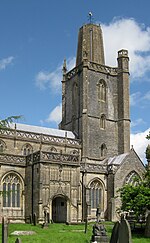Puxton Moor

Puxton Moor (grid reference ST412630) is a 31.07 ha (76.8 acres) biological Site of Special Scientific Interest on the North Somerset Levels, near Puxton, North Somerset, notified in 1994. It is a large area of pasture land networked with species-rich rhynes, now owned and managed as a nature reserve by Avon Wildlife Trust. The rhynes contain rare plants such as frogbit and rootless duckweed, along with many scarce invertebrates such as the hairy dragonfly and water scorpion. Birds seen at the site include; skylark, reed and sedge warblers, Eurasian whimbrel, whitethroat and reed bunting.The site also contains a relict Roman landscape which is evident in many of the fields; Medieval earthworks are also present.
Excerpt from the Wikipedia article Puxton Moor (License: CC BY-SA 3.0, Authors, Images).Puxton Moor
Puxton Moor Lane,
Geographical coordinates (GPS) Address Nearby Places Show on map
Geographical coordinates (GPS)
| Latitude | Longitude |
|---|---|
| N 51.36301 ° | E -2.84595 ° |
Address
Puxton Moor Lane
Puxton Moor Lane
BS24 6TH
England, United Kingdom
Open on Google Maps







